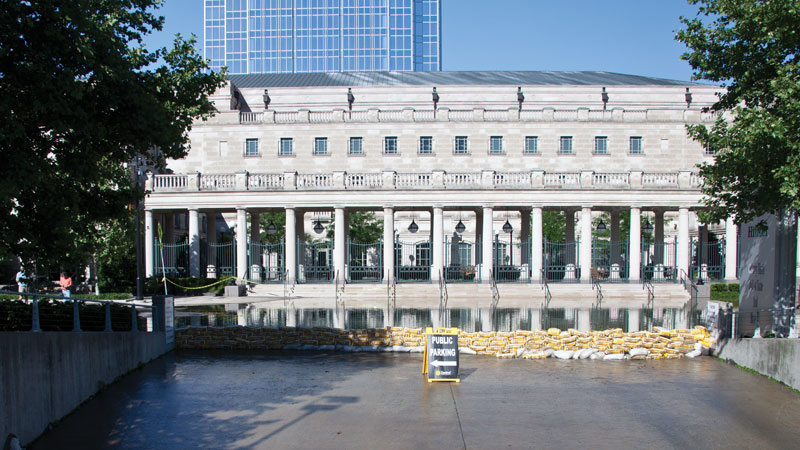
It's been five years since the Great Flood of 2010 inundated the Schermerhorn Symphony Center with more than 5 million gallons of muddy water, and yet the Nashville Symphony is still wading through paperwork and bureaucracy.
"After all this time, we still don't have the final installment from [the Federal Emergency Management Agency]," says Alan Valentine, the symphony's longtime president and CEO. "FEMA still hasn't officially closed its file on our case."
That's hardly surprising, since damages to the symphony's acoustically marvelous concert hall were staggering. At the height of the flood, water in the Schermerhorn's basement rose to 24 feet. It washed out the hall's intricate electrical control center, wiped out 11 air circulation units (each standing two stories high) and devastated an expensive commercial kitchen. Two 9-foot Steinway concert grand pianos (valued at more than $100,000 each) and the console and blower room for the hall's $2.5 million Martin Foundation Organ were also destroyed.
"The whole thing seems surreal to me now," says Valentine. "It's hard to imagine the extent of the catastrophe."
But it wasn't difficult to calculate the costs. All told, the flood caused around $40 million in damages to the Schermerhorn. In repairing its ornate limestone edifice, located south of Broadway along Fourth Avenue, the symphony had to shell out nearly $20 million in construction costs, $13 million in cleanup and $3 million for furniture, fixtures and equipment. Assistance from FEMA along with $10 million in flood insurance would eventually defray most, but not all, of these costs. But help didn't come right away.
"People may think FEMA comes out and writes you a check for $40 million, but that's not the case," Valentine told the Scene in 2013.
In fact, the symphony had to cover many of the initial expenses itself. That, along with the lingering effects of the 2008 financial meltdown, nearly forced Nashville's Grammy-winning orchestra into bankruptcy and its concert hall onto the auction block. A last-minute deal with Bank of America, facilitated by the symphony's billionaire benefactor Martha Ingram, finally set the orchestra on a long, slow path to recovery.
Valentine, for his part, emerged from the catastrophe with an almost Churchillian sense of pride and accomplishment. "I think people will look back on the flood and see it as the Nashville Symphony's finest hour," he says.
Indeed, within days of the flood, symphony administrators had established a new temporary headquarters at the SunTrust Plaza building. And within a week, the NSO presented its first postdiluvian concert, a free event featuring Christopher Cross and the ensemble at the Metro Courthouse. More than 5,000 people attended, and the symphony quickly found itself becoming a symbol of perseverance and recovery.
The herculean task of repairing the Schermerhorn took another eight months. On New Year's Eve, the hall reopened with a gala concert featuring violinist Itzhak Perlman.
"After we reopened, Mark Volpe, the managing director of the Boston Symphony, sent me a note of congratulations," says Valentine. "He said the flood probably would have put any other orchestra in America out of business. But we kept on playing and remained true to our mission. In the end, the flood proved that the Nashville Symphony is one vital, alive, relevant and resilient organization."









